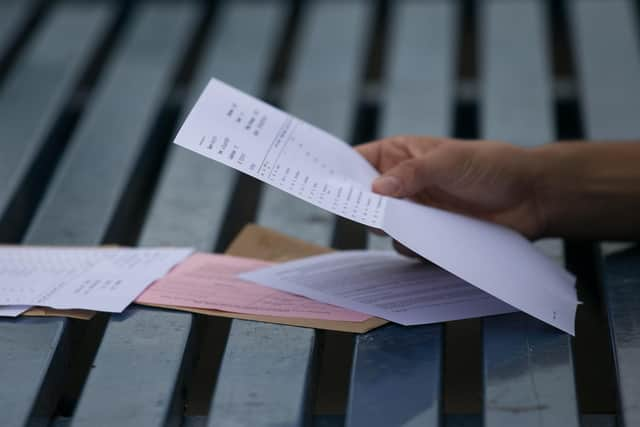A-Level results: Everything you need to know about grade boundaries and what they mean for students
and live on Freeview channel 276
In a year when ministers in England are aiming to restore pre-pandemic grades, thousands of students have started receiving grades, from 8am, which will help them progress on to university, work or apprenticeships – with the proportion of top A-level results expected to fall from last year.
According to exams regulator Ofqual, this year’s national results will be lower than last year but are expected to be similar to those in 2019.
Advertisement
Hide AdAdvertisement
Hide AdEach exam board have released the grade boundaries for exams. This demonstrates to students how many marks are needed for each grade and how close they were to achieving the next grade up.


Initially, the grade boundaries were released 24 hours before results day but this was changed to the day of results to reduce students' stress.
Here's where you can find all the grade boundaries for your relevant exam board:
- AQA 2023
- OCR (Oxford, Cambridge and RSA) – Grade boundaries for AS, A Level, Cambridge Technicals, Core Maths, Extended Project and FSMQ
Advertisement
Hide AdAdvertisement
Hide Ad- AS and A Level and BTEC National grade boundaries are available on the Pearson website here
If you don’t get your desired grades, there is no need to panic.
Dr Nick Smith, from Oxford Home Schooling, said there are plenty of options for students who didn't quite get the grades they hoped for.
The course director and founder of The Oxford Open Learning Trust said: “This year it was anticipated that A-level grades would be lower than expected for students, with results lowering to pre-pandemic levels.
Advertisement
Hide AdAdvertisement
Hide Ad“However, students should still be incredibly proud of their achievements, and today should be a day of celebrations for everyone. For those who don’t receive the grades they had initially hoped for, there are a number of options available to help them achieve their future goals.
“We know it can be a stressful time, so the first thing to do is look at the UCAS clearing systems, as this will show you which institutions have places available.
"Many institutions will still be accepting students, so have a look on the UCAS website or give them a quick call to check if your course is on offer elsewhere.
“If you feel like the grades you’ve received are lower than expected, you are allowed to appeal them by contacting your school, who will pass this onto the examining board. Once evidence has been examined, the board will decide whether changes to your results are needed.
Advertisement
Hide AdAdvertisement
Hide Ad“Alternatively, you may feel that now is the right time to look at different paths for your future, such as work experience placements, apprenticeships or even taking a gap year.
"There are plenty of opportunities available, especially for those looking to continue their learning through distance learning or potentially resitting you’re A-levels. Distance learning is an incredibly flexible approach to education as everything is online-based, giving you the option to learn wherever and whenever.”